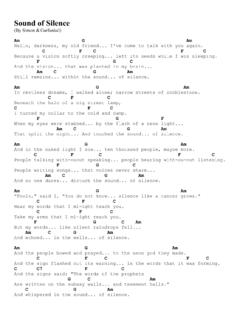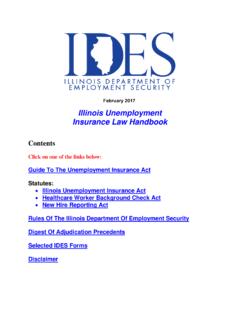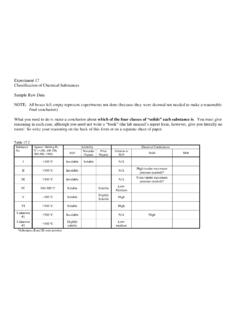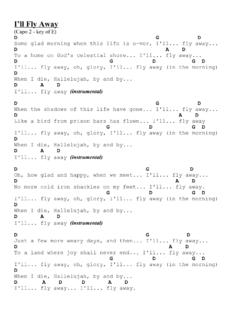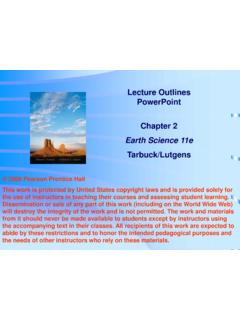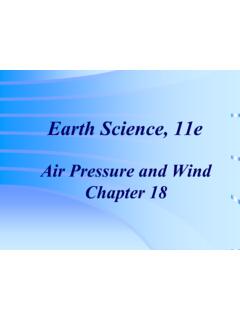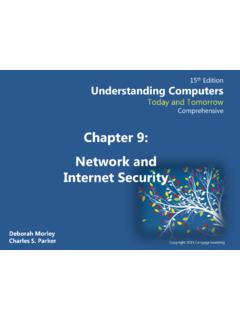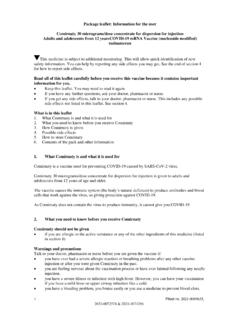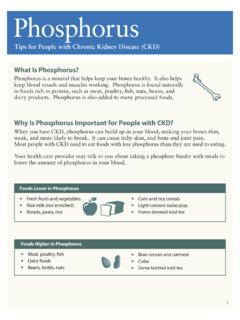Transcription of List of Ions and Elements Table Format 3
1 List of Ions and Elements to Know (Tabular Format ) NOTE2: The list of Elements on the right is there to indicate the ones whose NAMES I expect you to learn. The charges of "Type I" cations' should be memorized (see note above). The charges of "Type II" cations varies so you need not memorize them; however, you must be able to figure out the charge of these cations from a given compound formula (from the charges on the anions). N3- nitride NO3- nitrate NO2- nitrite S2- sulfide SO42- sulfate SO32- sulfite HSO4- hydrogen sulfate HSO3- hydrogen sulfite P3- phosphide PO43- phosphate PO33- phosphite HPO42- hydrogen phosphate H2PO4- dihydrogen phosphate HPO32- hydrogen phosphite H2PO3- dihydrogen phosphite C4- carbide CO32- carbonate HCO3- hydrogen carbonate O2- oxide F- fluoride (u before o!!) Cl- chloride Br- bromide I- iodide ClO4-, BrO4-, IO4- perchlorate, perbromate, etc. ClO3-, BrO3-, IO3- chlorate, bromate, iodate ClO2-, BrO2-, IO2- chlorite, bromite, iodite ClO-, BrO-, IO- hypochlorite, OH- hydroxide CN- cyanide C2H3O2- (or CH3 COO-) acetate MnO4- permanganate CrO42- chromate Cr2O72- dichromate NH4+ ammonium NOTE1: The only metal Elements outside of Group 1A and Group 2A that have only one common ion that you should memorize for this class are: Al, Zn, Ag.
2 The ions they tend to form are Al3+, Zn2+, and Ag+. All other transition metal Elements (and lead and tin) should be assumed to form at least two stable cations ( , they are Type II metals or cations) and therefore when writing a compound with one of them in it, you need to use a Roman numeral inside of parentheses to specify its charge. H hydrogen H+ C carbon N nitrogen P phosphorus O oxygen S sulfur F fluorine Cl chlorine Br bromine I iodine He helium Ne neon B boron Si silicon Se selenium Al aluminum Al3+ Sn tin Type II Pb lead Type II Li lithium Li+ Na sodium Na+ K potassium K+ Cs cesium Cs+ Mg magnesium Mg2+ Ca calcium Ca2+ Sr strontium Sr2+ Ba barium Ba2+ Ra radium Ra2+ Ti titanium Type II Cr chromium Type II Mn manganese Type II Fe iron
3 Type II Co cobalt Type II Ni nickel Type II Cu copper Type II Zn zinc Zn2+ Ag silver Ag+ Au gold Type II Hg mercury Type II common nonmetals found in organic compounds (and elsewhere!) halogens inert gases main group metals alkali metals (also main group) alkaline earth (metals) (also main group) transition metals other nonmetals or metalloids Anion formulas and their names Element Symbol, Name, and Monatomic Cation Formed

